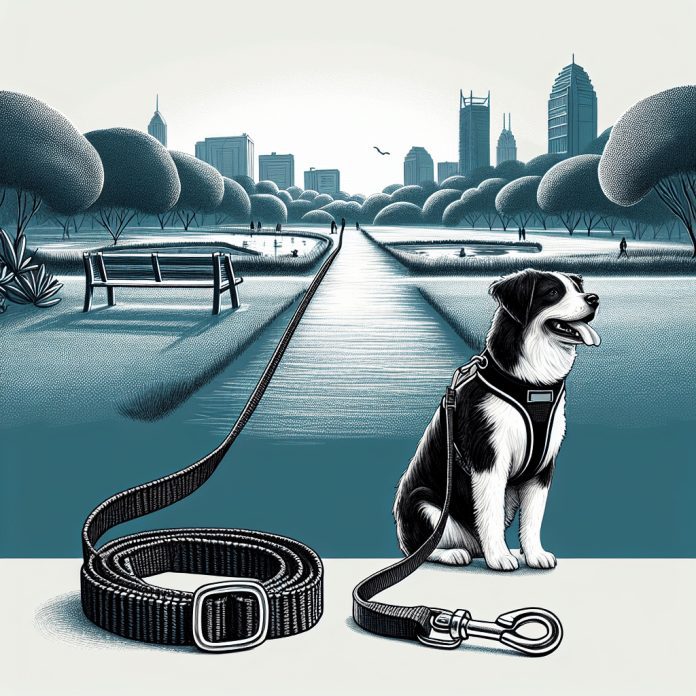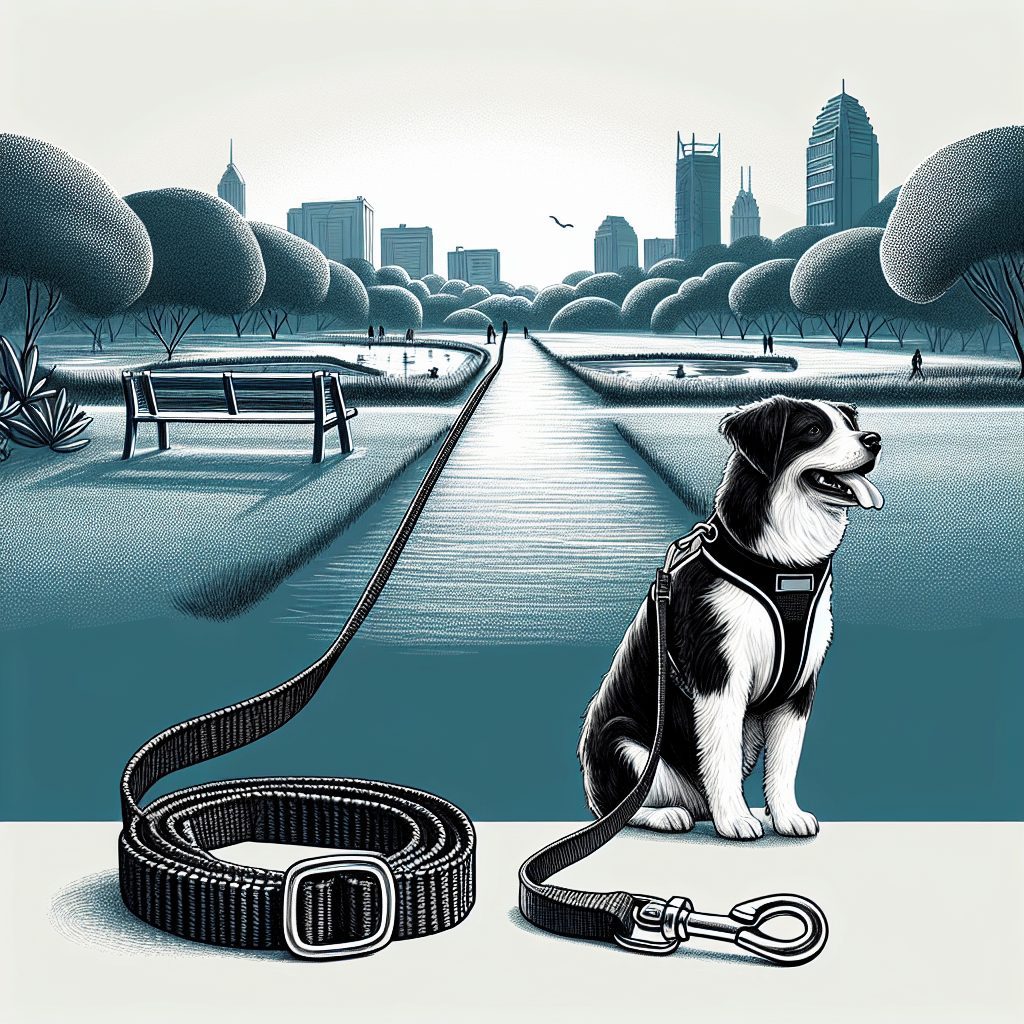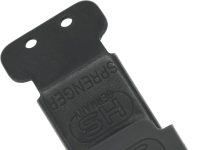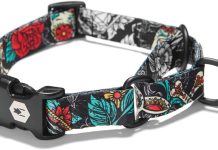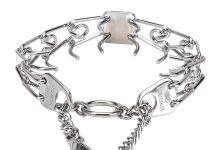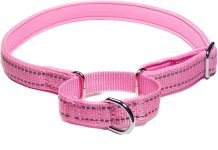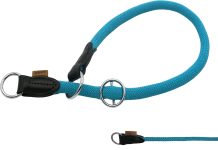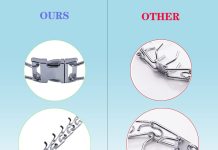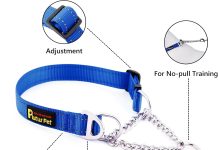If you’re new to the world of leash training, you might be wondering whether a harness is the right tool to use. Well, wonder no more! In this article, we’ll explore the benefits of using a harness for basic leash training and answer the age-old question: “Should I use a harness for basic leash training?” Get ready to discover why a harness could be the key to a successful and enjoyable leash training experience for you and your furry friend.
Benefits of Using a Harness
When it comes to walking and training your dog, using a harness can offer several benefits. One of the main advantages of using a harness is the even distribution of force it provides. Unlike traditional collars, which can put strain on the neck and throat, a harness spreads the pressure across the dog’s chest and back. This not only decreases the risk of injury, but also makes it more comfortable for your furry friend.
Another benefit of using a harness is the increased control it offers over your dog. With a harness, you have better leverage and can guide your dog’s movement more easily. This is particularly helpful when dealing with large or strong dogs who tend to pull on the leash. By having control over their body rather than just their neck, you can redirect their attention and encourage better walking behavior.
Additionally, using a harness can help reduce strain on the neck and throat. As mentioned earlier, traditional collars can put pressure on these sensitive areas, which can be problematic for dogs with existing health conditions or those prone to neck injuries. By using a harness, you minimize the risk of aggravating these issues and provide a safer and more comfortable walking experience for your dog.
Lastly, a harness can help prevent injuries. When a dog pulls forcefully on a collar, there is a risk of causing damage to their neck or trachea. This can lead to serious health problems and even require surgery in severe cases. By using a harness, you minimize the risk of these injury-inducing incidents and keep your four-legged companion healthy and happy.
Types of Harnesses
There are several types of harnesses available in the market, and it’s important to choose the one that suits your dog’s needs and behavior. Here are the most common types of harnesses:
Table of Contents
Back-clip harness:
This type of harness features a ring on the back where you attach the leash. It is easy to put on and offers good support for small to medium-sized dogs. However, it may not provide optimal control for dogs who tend to pull.
Front-clip harness:
A front-clip harness has a ring on the chest area of the dog, providing more control over their movement. When the dog tries to pull, the harness turns their body towards you, discouraging pulling behavior. This type of harness is particularly useful for dogs who are strong pullers.
Dual-clip harness:
As the name suggests, a dual-clip harness has both a front and back attachment point. This allows you to choose where to attach the leash depending on your dog’s behavior and training needs. It provides versatility and is suitable for dogs who may require different levels of control during walks.
Head-halter harness:
This type of harness is designed to gently control the dog’s head and muzzle, similar to a horse’s halter. It offers excellent control over the dog’s movement and is often recommended for dogs who are prone to lunging or aggressive behavior. However, it requires proper introduction and training to ensure the dog feels comfortable wearing it.
Choosing the Right Harness
When selecting a harness for your dog, there are several factors to consider to ensure the perfect fit and functionality. Here are some tips to help you choose the right harness:
Consider the dog’s size and breed:
Different harnesses are designed for different sizes and breeds of dogs. Make sure to measure your dog’s chest girth and consult the manufacturer’s sizing guide to find the appropriate size. Also, take into account your dog’s unique physique and any breed-specific considerations.
Assess the dog’s behavior and leash pulling tendencies:
Think about how your dog typically behaves on walks. If they tend to pull a lot, a front-clip harness might be the best option for better control. If they walk calmly on a loose leash, a back-clip harness might work well. Consider your dog’s individual tendencies and choose a harness that matches their behavior.
Consult with a professional trainer or veterinarian:
If you’re unsure about which harness is best for your dog, consider seeking advice from a professional dog trainer or veterinarian. They can assess your dog’s specific needs and provide personalized recommendations.
Research and read reviews:
Before purchasing a harness, do some research and read reviews from other dog owners. Look for feedback on comfort, durability, and ease of use. This will give you an idea of the harness’s quality and whether it is suitable for your dog.
Try out different harnesses:
Sometimes, finding the perfect harness takes a bit of trial and error. Don’t hesitate to try out a few different harnesses to see which one works best for your dog. Keep in mind that what works for one dog may not work for another, so be patient and persistent in finding the right fit.
Positive Reinforcement Techniques
Effective leash training involves using positive reinforcement techniques to encourage desired behaviors. Here are some positive reinforcement techniques you can incorporate into your harness training:
Reward-based training:
When your dog displays good walking behavior, reward them with praise, treats, or a favorite toy. Positive reinforcement helps reinforce the behavior you want, making it more likely to be repeated.
Clicker training:
Clicker training involves using a handheld clicker to mark desired behaviors, followed by a reward. The sound of the clicker serves as an immediate and distinct marker that tells your dog they have done something good.
Verbal praise:
Dogs respond well to verbal cues and praise. Use a positive and enthusiastic tone of voice when your dog walks nicely on a leash, and shower them with verbal praise. This will help reinforce the desired behavior and make them more eager to repeat it.
Treats and rewards:
Using treats as rewards can be a highly effective way to motivate your dog during harness training. Choose small and tasty treats that your dog loves and use them as positive reinforcement when they exhibit good leash manners.
Consistency and patience:
Consistency is key in leash training. Set clear expectations for your dog and be patient with their progress. It takes time for dogs to learn new behaviors, so be consistent in your training efforts and have patience as they gradually improve.
Is a Harness Suitable for All Dogs?
While harnesses can be beneficial for most dogs, there are certain cases where specific considerations need to be taken into account. Here are some factors to consider when deciding if a harness is suitable for your dog:
Puppies:
Puppies can benefit from using a harness, but it’s important to ensure that the harness is the appropriate size and properly fitted. Puppies grow quickly, so regular checks and adjustments are necessary to accommodate their changing size.
Small and toy breeds:
Small and toy breeds often have delicate necks and are prone to tracheal collapse. Using a harness can help prevent unnecessary strain on their necks and minimize the risk of injuries.
Brachycephalic breeds:
Brachycephalic breeds, such as Bulldogs and Pugs, often experience breathing difficulties. Using a harness that avoids putting pressure on their neck and throat can be more comfortable and safer for these breeds.
Senior dogs:
Senior dogs may have mobility issues or arthritis, making it more important to choose a comfortable and supportive harness. Look for harnesses with padded straps and consider consulting with your veterinarian for specific recommendations.
Dogs with health conditions:
Dogs with health conditions, such as spinal issues or respiratory problems, may require specialized harnesses. Consult with your veterinarian to ensure the harness you choose will provide the necessary support and won’t exacerbate any existing conditions.
Aggressive or reactive dogs:
For dogs with aggression or reactivity issues, a harness can provide better control and minimize the risk of escape during walks. However, it’s important to choose a harness that does not increase arousal or discomfort for the dog.
Transitioning from a Collar to a Harness
If you’ve been using a collar for leash training and want to transition to a harness, it’s important to introduce the harness gradually. Here are some tips to help ease the transition:
Introduce the harness gradually:
Start by allowing your dog to sniff and examine the harness before putting it on. Gradually introduce it by holding it near their body and rewarding them for calm behavior.
Positive association with the harness:
Create a positive association with the harness by associating it with treats, praise, and fun activities. This will help your dog see the harness as something positive and look forward to wearing it.
Use treats and rewards:
Reward your dog with treats and praise throughout the process of putting on and wearing the harness. This will help reinforce positive associations and make the transition smoother.
Keep training sessions short:
In the beginning, keep training sessions short and gradually increase the duration as your dog becomes more comfortable with the harness. This will prevent overwhelming your dog and ensure a positive training experience.
Monitor your dog’s comfort and behavior:
Pay attention to your dog’s comfort level and behavior when wearing the harness. If they appear uncomfortable or exhibit signs of distress, reassess the fit and consider trying a different style or size of harness.
Common Mistakes to Avoid
When using a harness for leash training, it’s important to avoid some common mistakes that can hinder your dog’s progress. Here are a few mistakes to watch out for:
Using the wrong size or type of harness:
Using a harness that doesn’t fit properly can cause discomfort and restrict your dog’s movement. Ensure you measure your dog’s chest properly and choose a harness that is appropriate for their size and breed.
Poor fitting and adjustments:
A harness that is too loose may cause your dog to wiggle out of it, while one that is too tight can be uncomfortable and restrict their movement. Check the fit regularly and make necessary adjustments to ensure the harness is snug, but not too tight.
Lack of proper leash handling:
Even with a harness, proper leash handling is crucial for successful training. Always hold the leash securely, preferably with both hands, and avoid jerking or pulling abruptly. Use gentle, consistent pressure to guide your dog’s movements.
Inconsistency in training:
Consistency is essential in any training regimen. Be consistent with your commands, expectations, and rewards to help your dog understand what is expected of them. Inconsistency can lead to confusion and hinder progress.
Pulling or jerking the leash:
Using excessive force, pulling, or jerking the leash can cause discomfort and may reinforce pulling behavior. Focus on positive reinforcement techniques and redirect your dog’s attention rather than resorting to forceful methods.
Training Tips for Using a Harness
To ensure successful leash training with a harness, here are some tips to guide you through the process:
Start in a controlled and familiar environment:
Begin training your dog to walk on a harness in a calm and familiar environment, such as your backyard or a quiet park. This will help minimize distractions and allow your dog to focus on learning the new behavior.
Use a standard leash length:
Using a standard leash length, usually around six feet, helps maintain control while giving your dog enough freedom to explore their surroundings. Avoid retractable leashes, as they can give your dog too much freedom and hinder training efforts.
Practice loose leash walking:
Encourage your dog to walk on a loose leash by rewarding them for staying by your side and maintaining slack in the leash. As they improve, gradually increase the distance between you and your dog while maintaining loose leash walking.
Use additional training aids if needed:
In some cases, using additional training aids, such as a front-clip harness or a head-halter, may be necessary to address specific issues. These aids can provide additional control and assist in managing challenging behaviors.
Gradually increase distractions and difficulty:
As your dog becomes more comfortable and proficient with leash walking, gradually increase the level of distractions and difficulty. This could include walking in busier areas or encountering other dogs. Always reward your dog for good behavior and progress.
Potential Drawbacks of Using a Harness
While harnesses offer many benefits, there are a few potential drawbacks to be aware of. These include:
Encourages pulling in some dogs:
Although harnesses are designed to discourage pulling, some dogs may still pull while wearing a harness. This can be due to a lack of training or the dog’s individual behavior traits. If your dog continues to pull, consider seeking professional help to address the underlying issue.
May be uncomfortable for certain dogs:
While most dogs find harnesses comfortable, some may experience discomfort due to the fit or style of the harness. Monitor your dog’s behavior and make adjustments as necessary to ensure their comfort during walks.
Difficulties in fitting and adjusting:
Finding the right fit and making proper adjustments can be challenging, especially if your dog has an unusual body shape or size. Be patient and willing to try different harnesses to find the one that fits your dog comfortably and securely.
Not suitable for off-leash activities:
Harnesses are primarily designed for leash walking and control. They are not suitable for off-leash activities, as they don’t provide the same level of control or security as a properly fitted collar.
Limited control in certain situations:
In some situations, such as emergencies or quick reactions, a harness may provide less control compared to a well-fitted collar. It’s essential to assess your specific needs and choose the appropriate tool for different situations.
FAQs
Can I use a harness for all types of dogs?
While harnesses can be used for most dogs, there are specific considerations for certain breeds, sizes, and behaviors. It’s important to choose a harness that suits your dog’s individual needs and consult with professionals if necessary.
How do I measure my dog for a harness?
To measure your dog for a harness, use a soft measuring tape to measure their chest girth, just behind their front legs. Refer to the sizing guide provided by the manufacturer to determine the correct size for your dog.
Is it necessary to use a harness for leash training?
While not mandatory, using a harness for leash training can provide better control, reduce strain on the neck, and prevent injuries. It’s a personal choice, but one worth considering for most dogs.
Can a harness cause injury to my dog?
When used correctly, harnesses are generally safe for dogs. However, using an ill-fitting harness or using excessive force when handling the leash can cause discomfort or injury. It’s crucial to choose the appropriate size and style of harness and use positive reinforcement techniques during training.
How long does it take for a dog to get used to a harness?
The time it takes for a dog to get used to a harness can vary depending on the individual dog. Some dogs may adapt quickly, while others may require more time and gradual introduction. Patience and positive reinforcement will help your dog associate the harness with positive experiences.
Can a harness stop my dog from pulling on the leash?
While a harness can help discourage pulling behavior by offering better control and redirection, it’s important to combine it with leash training techniques. Consistent training and positive reinforcement are key to addressing and reducing pulling behavior in dogs.

